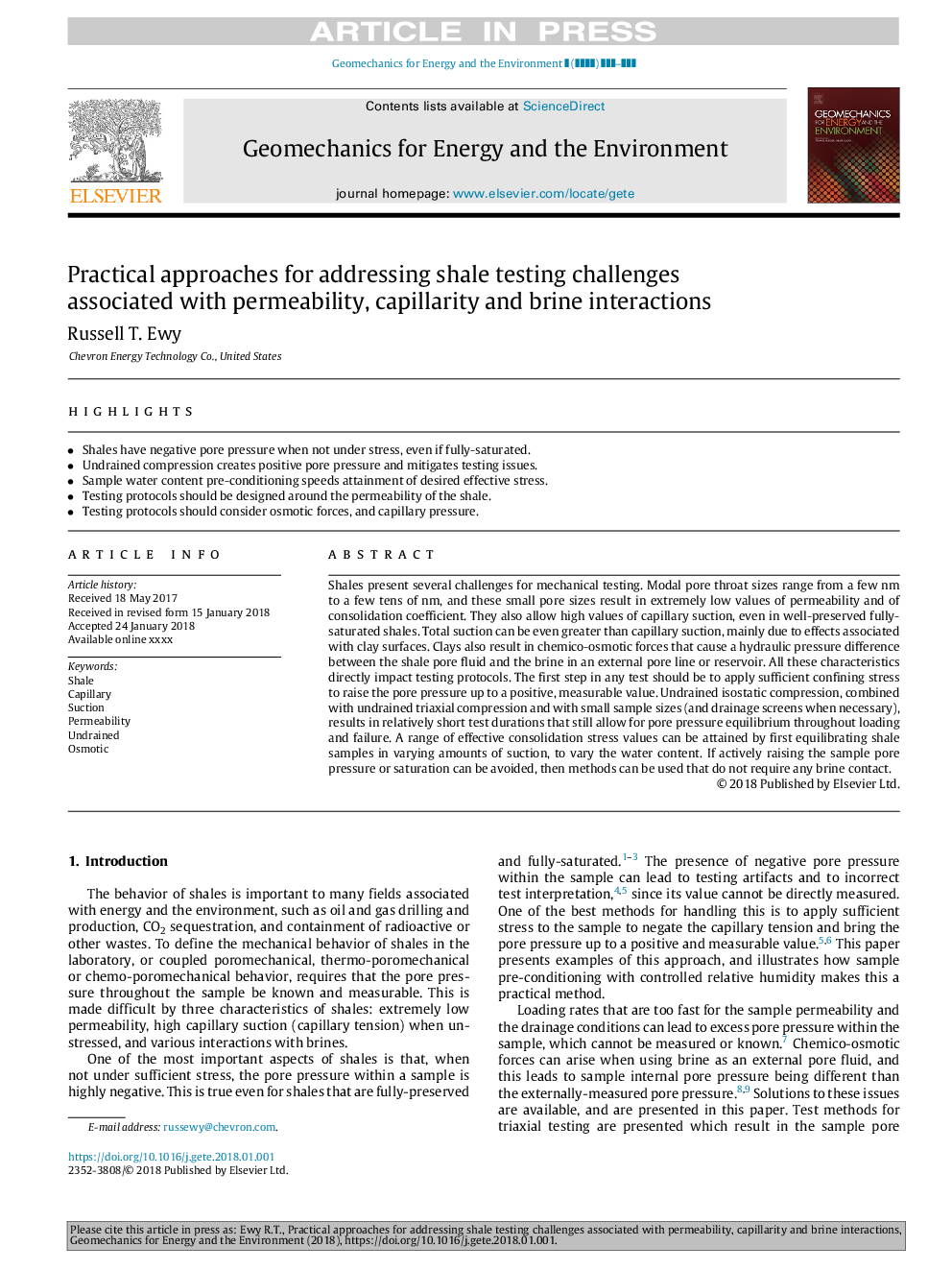| Article ID | Journal | Published Year | Pages | File Type |
|---|---|---|---|---|
| 6746552 | Geomechanics for Energy and the Environment | 2018 | 13 Pages |
Abstract
Shales present several challenges for mechanical testing. Modal pore throat sizes range from a few nm to a few tens of nm, and these small pore sizes result in extremely low values of permeability and of consolidation coefficient. They also allow high values of capillary suction, even in well-preserved fully-saturated shales. Total suction can be even greater than capillary suction, mainly due to effects associated with clay surfaces. Clays also result in chemico-osmotic forces that cause a hydraulic pressure difference between the shale pore fluid and the brine in an external pore line or reservoir. All these characteristics directly impact testing protocols. The first step in any test should be to apply sufficient confining stress to raise the pore pressure up to a positive, measurable value. Undrained isostatic compression, combined with undrained triaxial compression and with small sample sizes (and drainage screens when necessary), results in relatively short test durations that still allow for pore pressure equilibrium throughout loading and failure. A range of effective consolidation stress values can be attained by first equilibrating shale samples in varying amounts of suction, to vary the water content. If actively raising the sample pore pressure or saturation can be avoided, then methods can be used that do not require any brine contact.
Related Topics
Physical Sciences and Engineering
Earth and Planetary Sciences
Geotechnical Engineering and Engineering Geology
Authors
Russell T. Ewy,
